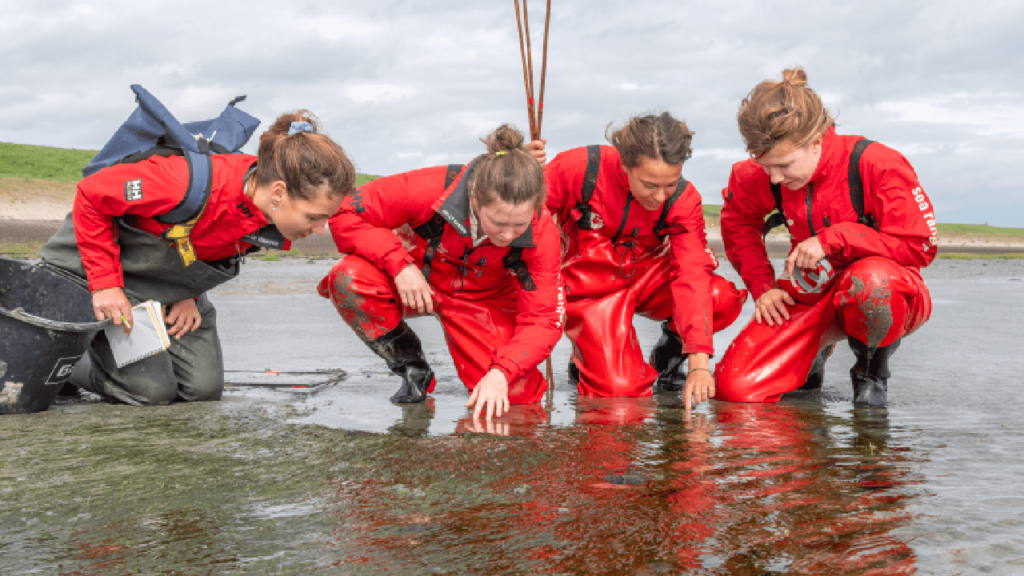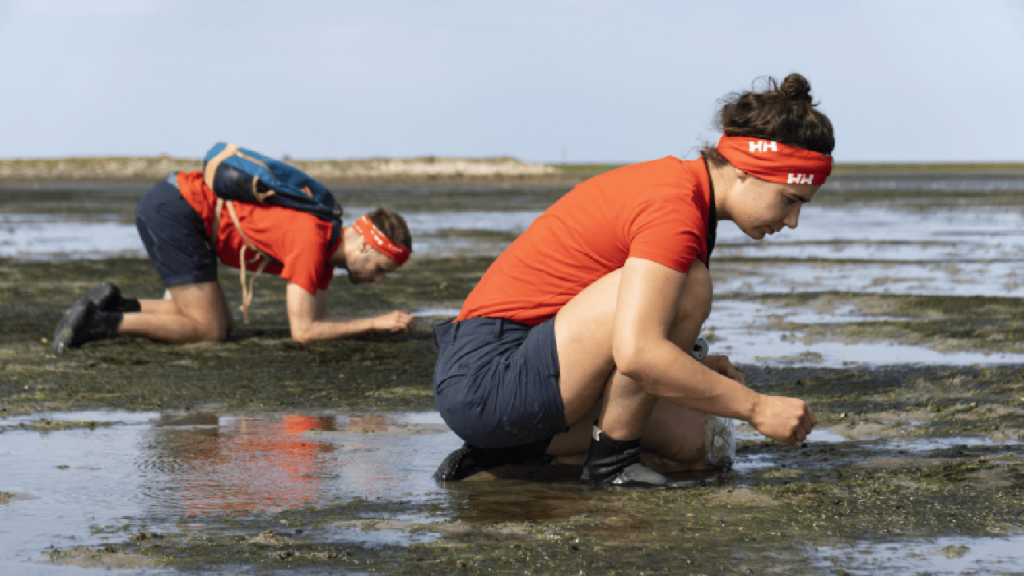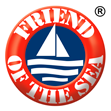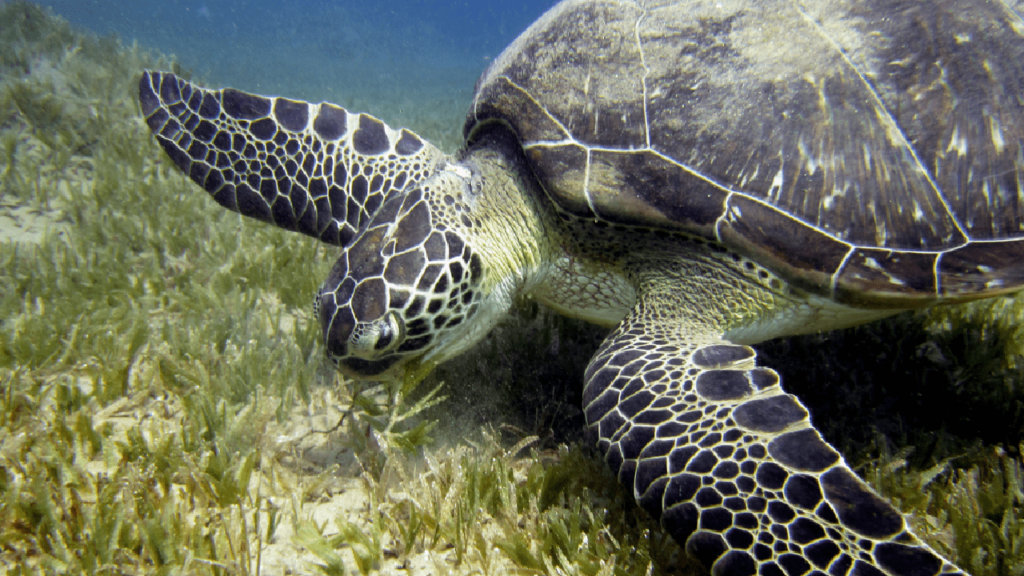Seagrasses are salt-water plants, the only flowering plants in marine environments, with 72 species worldwide. Seagrasses evolved from terrestrial plants to colonize photic zones of the ocean, like their distant cousins, seagrasses also photosynthesize, and some species even have pollinators under the water to help them complete their life cycle. The seagrass meadows are one of the most productive ecosystems in the world. The meadows alter the ecosystem around them, both in physical and chemical forms: reducing coastal erosion, providing not only habitat but also food for marine life, enhancing the quality and oxygenating the water, forming an important coastal ecosystem while also protecting the coasts.
Just like coral reefs, seagrass meadows serve as nursery ground, protection, and food resources for many animals, such as manatees (Trichechus spp.) and green turtles (Chelonia mydas).
The problem
Studies show that seagrass meadows are declining all over the world, 14% of the species are at elevated risk of extinction, and since the 19th century, 20% of the total area of seagrass has been lost. Their threats are habitat destruction, pollution, and climate change.
Coastal land development, motorboating, and trawling, activities destroy seagrass beds or increase water turbidity, hindering photosynthesis. Higher temperatures, sea level rise, and increased weather events like hurricanes and storms, caused by global warming, also prevent the plants from growing and reproducing.
Pollution of the ocean, especially with untreated sewer, causes an increase in nitrogen and phosphorus, stimulating the overgrowth of macroalgae and phytoplankton, creating dense mats on the water’s surface, limiting the amount of light that reaches the sea floor, and consuming rapidly the quantity of oxygen, leading to seagrass death and initiating a cycle where decomposing organic matter further reduces oxygen levels, causing the death of other creatures.
Environmental Consequences
The degradation and loss of these habitats cause serious repercussions for marine biodiversity and artisanal and commercial fishing. Hence many coastal species use the meadows as nurseries, degrading the habitat causes a loss in biodiversity, decreasing the number of the populations. The loss of meadows also impacts ecotourism, for example, manatees and green turtles feed practically exclusively of eat seagrass, without seagrass, there would be a major loss in those populations, which impacts directly the ecotourism of animal viewing.
The meadows also are responsible for slowing the impact of waves in the coastal zones. The disappearance of seagrass meadows will increase the coastal erosion and degradation of coastal habitats, which means those environments would display chances of physical and chemical components, that could also change tourism, and fishing activities and loss of coastal animals, such as shorebirds, that depend on the tides for feeding and egg laying.
Possible solutions
To protect the seagrass, you first need to understand its importance and share it with the ones we know about it. Together, we can charge the authorities about the importance of basic sanitation, especially in coastal areas and cities close to rivers and lakes.
You can also donate to initiatives that preserve this habitat worldwide. If you cannot donate, consider volunteering with a local initiative.
You can also consume sustainable ocean-related products, such as crustaceans and oysters, other than fish.
WSF Activities and Initiatives
The World Sustainability Foundation supports the Sea Ranger Service, an initiative located in the Netherlands, that works in nature restoration, especially seagrass meadows, marine surveying, and environmental education. The Sea Rangers have seagrass restoration projects in 6 Europe countries, Denmark, Germany, France, Netherlands, Spain, and the UK.
Sea Ranger Service
The Sea Ranger Service is a social company on a bold mission to restore 1 million hectares of ocean biodiversity by 2040, whilst training 20,000 young people towards a maritime career.
Young, unemployed people are trained up as Sea Rangers to work at sea daily, researching, protecting, and restoring nature in our oceans, working closely together with governments and the maritime industry.
By making the ocean our business, the company creates a combined social and environmental impact, towards a better future for young people and our natural environment.
The supported sites
Arcachon Bay – An intertidal bay in the south-west of France (by Bordeaux) where we work to restore 1.900 hectares of seagrass, in collaboration with the Office Français pour la Biodiversité. Young people trained and employed as Sea Rangers carry out the necessary work.
Étang de Berre – A closed-off bay, now a lagoon, in the south-east of France (by Marseille) where we work to restore 1.500 hectares of seagrass, in collaboration with GIPREB. Here too, Sea Rangers carry out the necessary work.


Reference
“39 Ways to Save the Planet – Sublime Seagrass“. BBC Radio 4.
Larkum A. W. D., R. J. Orth, and C. M. Duarte (2006) Seagrass: Biology, Ecology and Conservation, Springer, The Netherlands.
https://searangers.org/ Sea Ranger Service.







